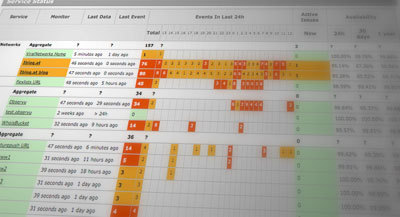It has been a while since our last update. In this time, we’ve been working closely with our first customers to determine and implement various essential features. We’ve also applied our experience and research on hosting in the cloud to their projects. This has led up to a major milestone last week: observu.com now hosts the latest beta and a more descriptive website. It is still very private, but if you get on our mailinglist, we can let you in soon.
In terms of development we’ve made a lot of progress on properly organizing the API and mobile website code, to share 100% of the codebase with the main website. (proper MVC with only difference being the View). We are a big fan of Redis, which we’ve used extensively for various queues and rate limiting solutions, that would be challenging to get right otherwise.
What we are working on now is usability and extended reporting. Of course we also have a heap of features in mind, but we would love to have your feedback first, to know what really matters.


 It has been a while since I last updated you about our progress. We are still continuing our work on various reports. An important part of this is creating informative graphs. Although we liked Open Flash Chart, it felt a bit sluggish and we decided to go for a solution based on the
It has been a while since I last updated you about our progress. We are still continuing our work on various reports. An important part of this is creating informative graphs. Although we liked Open Flash Chart, it felt a bit sluggish and we decided to go for a solution based on the